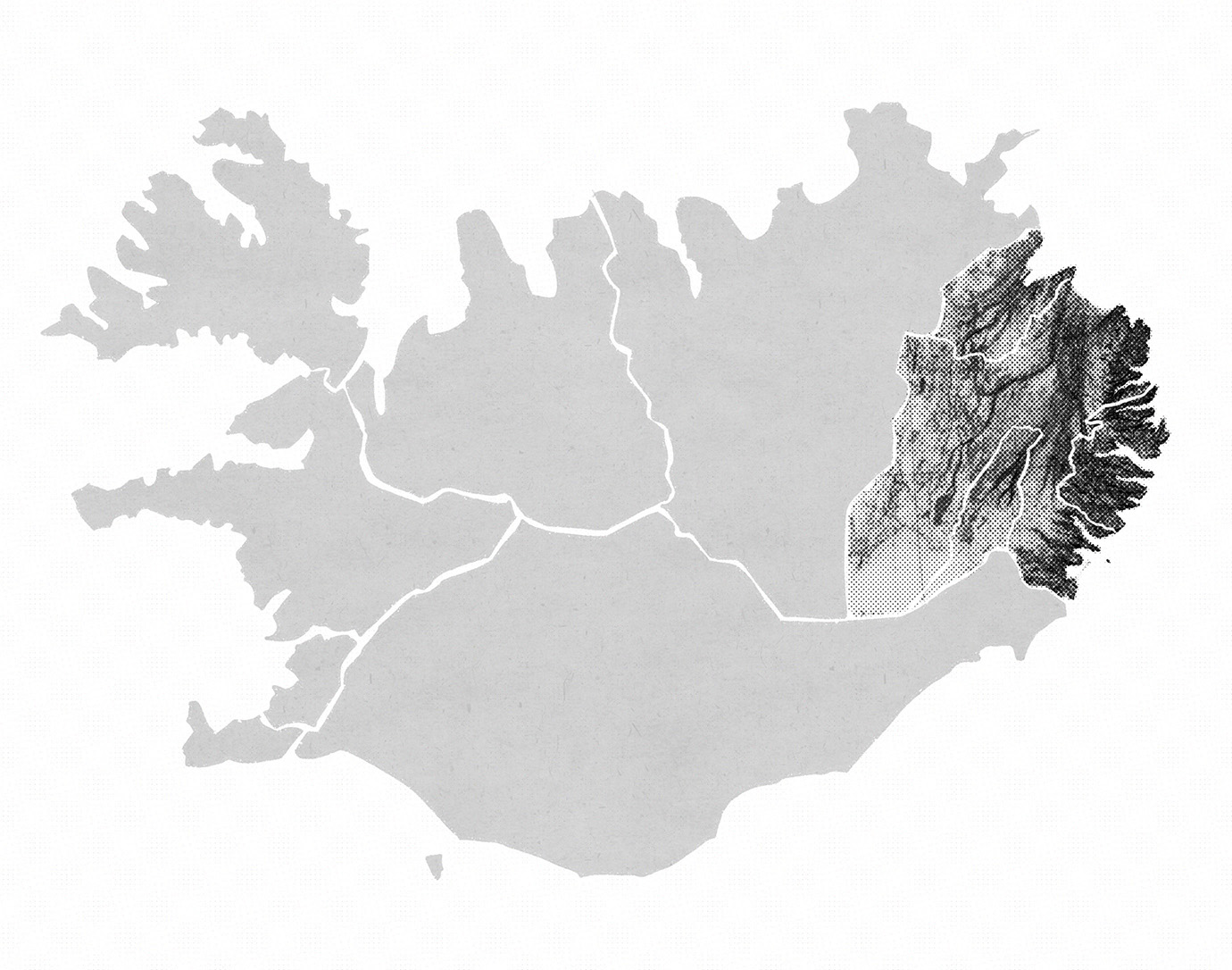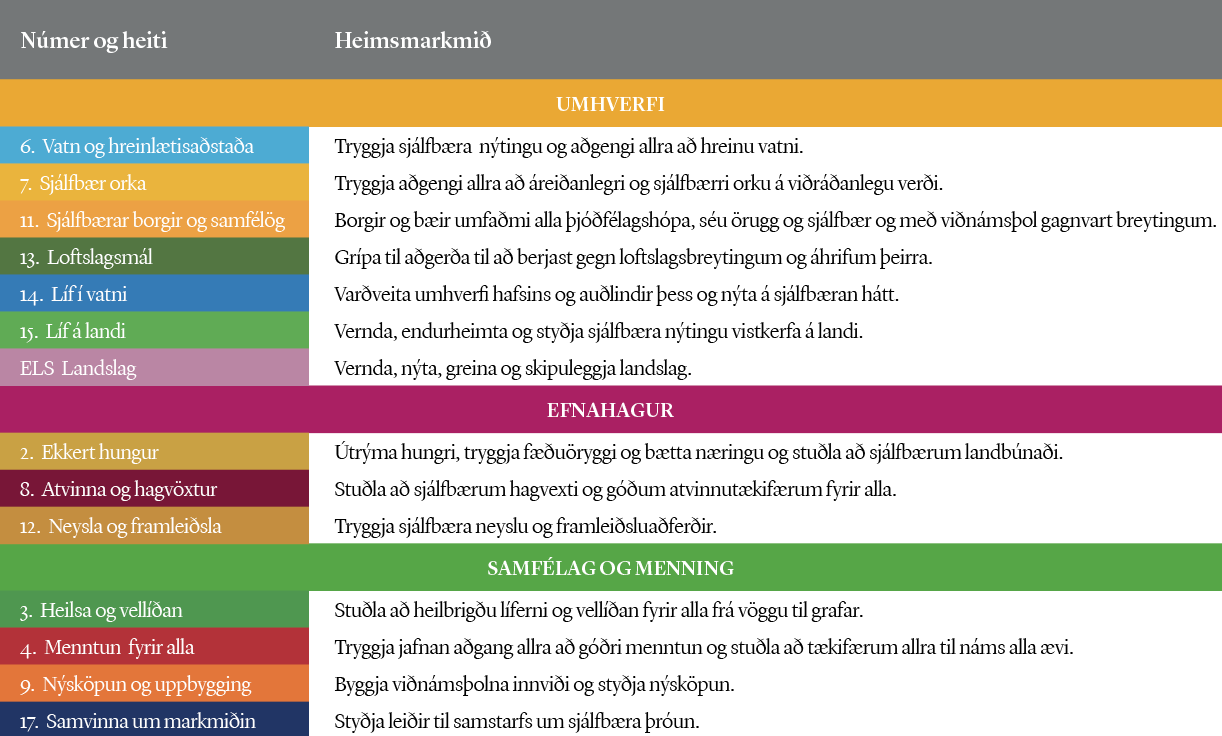8. Environmental Assessment
The purpose of environmental assessment at the planning stage is to ensure that sustainable development is considered in policy-making and planning, as stipulated by the Environmental Impact Assessment Act No. 111/2021.

8.1 About the Environmental Assessment
The purpose of environmental assessment at the planning stage is to ensure that sustainable development is considered in policy-making and planning, as stipulated by the Environmental Impact Assessment Act No. 111/2021. The environmental assessment for the draft of the Regional Plan for East Iceland 2022-2044 is presented in an appendix to the plan, but the approach to the assessment and its conclusions are described here.
8.2 Approach to the Environmental Assessment
Environmental Criteria
The environmental impacts of the regional plan proposal were assessed based on environmental factors specified in the Environmental Impact Assessment Act. These environmental factors correspond to the definition of the environment in the Act, described as a “collective term for society, human health, animals, plants, biological diversity, soil, geological formations, water, air, climate, property, cultural heritage, including historical and archaeological sites, and landscape, and the interplay of these factors.”
Environmental criteria were identified for each environmental factor. These criteria represent the objectives against which the goals of the plan are compared to determine whether the respective goal is deemed to have positive, negligible, negative, or uncertain impacts on the environmental factor.
To assess whether the regional plan proposal promotes sustainable development, the United Nations Sustainable Development Goals (SDGs) were used as environmental criteria. The approach in the environmental assessment for the amendment to the National Planning Strategy 2015-2026 was referenced.1
Additionally, the objectives of the National Planning Strategy and proposals for its amendment were considered in the assessment, as municipal planning initiatives are intended to implement it. As in the environmental assessment for the National Planning Strategy proposal, criteria based on the European Landscape Convention (ELS) were also used.
The SDGs, each with its number and colour, were categorized under three areas of sustainable development: environment, economy, and society and culture. Only the SDGs deemed relevant to the regional plan proposal were specified.

Assessment Questions
In the tables in the environmental assessment report, which is in the appendix, the sub-goals of each SDG relevant to the regional plan proposal are specified. There is also a checklist of environmental factors that the SDG addresses.
Assessment questions were defined based on:
- The SDGs
- The objectives of the National Planning Strategy 2015-2026 (LSK)
- The objectives in the proposal for the amendment to the National Planning Strategy (VLSK)
- The objectives in the European Landscape Convention (ELS)
In the explanations for the assessment, the relevant criteria are referenced with the abbreviations above.
Assessment of Compliance with Environmental Criteria
In the environmental assessment report, the goals of the regional plan proposal that are deemed to align with the respective SDG and its environmental criteria are highlighted. The relevant goal numbers of the regional plan proposal are referenced, which consist of a letter and a number.
The following symbols are used to indicate whether the regional plan proposal is deemed to be in compliance or non-compliance with the respective SDG:
++ The proposal is assessed as compliant with the criteria for the respective SDG, and no deviations were identified.
+ The proposal is assessed as compliant with the criteria for the respective SDG, but with deviations.
– The proposal is assessed as non-compliant with the criteria for the respective SDG, with deviations.
–– The proposal is assessed as non-compliant with the criteria for the respective SDG, without deviations.
? It is difficult to determine compliance as it depends on the implementation at later planning stages or other uncertainties.
8.3 Conclusion of the Environmental Assessment
The regional plan proposal was generally assessed as compliant with the environmental criteria. The proposal is therefore considered to have positive impacts on the environment, economy, and society. However, some aspects were identified where the proposal does not fully comply with specific criteria or does not address all elements covered by the criterion. These include:
- The policy on a multi-core community and potential new residential and service centres in rural areas is somewhat inconsistent with LSK 2.1 criteria on directing growth to existing centres and LSK 3.1 criteria on defining main centres in each region. The explanation in the regional plan proposal’s policy on settlement patterns states: “The National Planning Strategy emphasizes strengthening communities by directing growth to existing centres and defining main centres in each region. The goal is to optimize infrastructure use and support the creation of work and service areas that can sustain diverse services.2 In East Iceland, it is not considered advisable to prioritize one centre over others due to the many well-established settlement centres, the distance between some of them, and difficult winter travel. Therefore, the emphasis is on strengthening all centres in some way and improving transport connections between them. The focus will be on improving basic services in local communities3 and ensuring that it is possible to drive to the largest urban centres within 60 minutes year-round.”
- Goal B.2 aims for adequate connection of the East Iceland system to the main transmission system of Iceland, but does not address the location of transmission facilities, thus making the impact on nature and the environment uncertain (LSK 2.5).
- The climate policy is conducive to supporting actions against ocean acidification (SDG 14.3) but does not directly address this issue.
- Direct measures against the colonization and impacts of invasive alien species on land and water ecosystems (SDG 15.8) are not presented.
